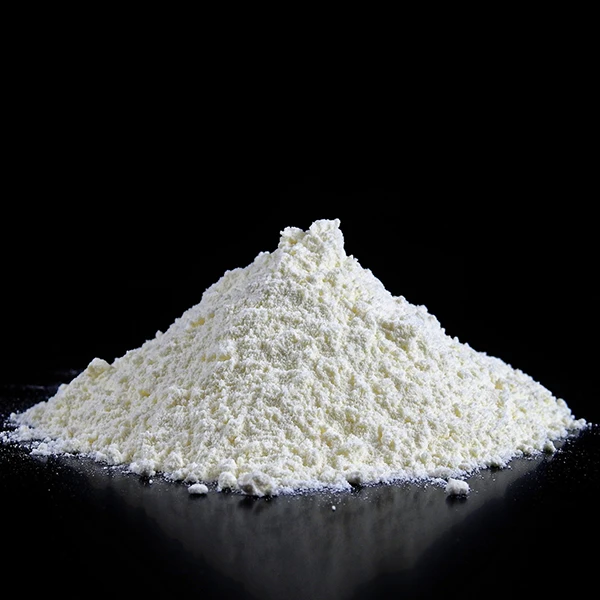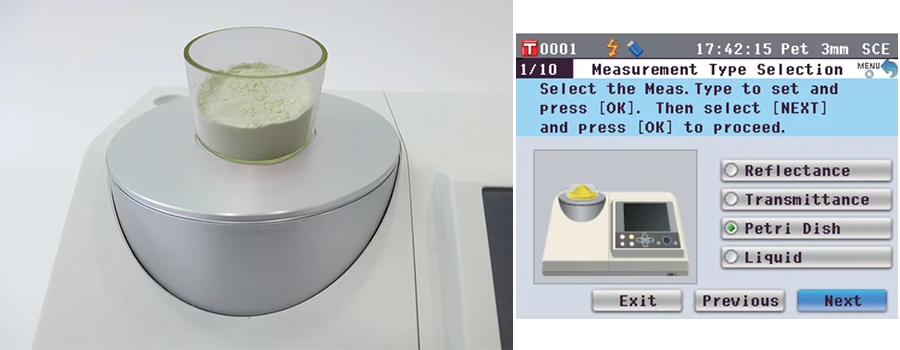Calcium Carbonate Color Measurement

Calcium carbonate, also known as limestone, is a versatile and widely used mineral with various applications, from agriculture and food processing to construction, rubber glove manufacturing, ceramic manufacturing, and more. Not only can it be utilized as a dietary supplement, but it also serves as a filler material in coatings, latex/rubber gloves, etc.
One crucial aspect of calcium carbonate is its color, which directly impacts its quality and suitability for these diverse applications. Color measurement instruments, like spectrophotometers, are commonly employed to measure calcium carbonate color as they offer a more objective and consistent approach to color evaluation.
Color Measurement of Calcium Carbonate with Spectrophotometer
Spectrophotometers are sophisticated optical instruments commonly used in various industries, like chemicals, food, plastics, coating, etc., to measure color. The underlying principle of a spectrophotometer involves analyzing the light absorbed or reflected by a sample at different wavelengths, providing quantitative data on the amount of light absorbed or transmitted, which correlates directly with the sample’s color properties. The quantitative data obtained from the spectrophotometer is usually presented in various color spaces, with the CIE L*a*b* color space being one of the most commonly used. In CIE L*a*b* color space, color is represented as three values: L* for lightness, a* for the green-to-red axis, and b* for the blue-to-yellow axis. These values allow for a standardized characterization of color.
Spectrophotometers can support various stages of calcium carbonate manufacturing, contributing to quality control, process optimization, and research and development. Take, for example, their application in quality control, where spectrophotometers can offer a reliable and objective means to assess the color of different batches of calcium carbonate. By setting specific color tolerances, manufacturers can promptly identify any deviations from the standard color and take corrective measures to ensure product uniformity.
When evaluating the color of calcium carbonate using the CIE L*a*b* color space, emphasis should be placed on the L* value. Alternatively, one-dimensional scales like the whiteness index, Yellowness Index, etc., can also be used to assess the color of calcium carbonate. Before proceeding with color measurement, the preparation and presentation of calcium carbonate samples must be standardized appropriately to ensure accurate and repeatable measurement results. Considering that calcium carbonate comes in a powdered form, it is crucial to be aware of potential light trapping issues and sensitivity to ambient light conditions. Minimizing these effects requires maintaining an adequate sample thickness.
Spectrophotometer CM-5 for Calcium Carbonate Color Measurement
Konica Minolta Spectrophotometer CM-5, an accurate and versatile color measurement instrument, is not only capable of measuring and expressing the color of calcium carbonate in CIE L*a*b* color space but also several other color indices like whiteness index, yellowness index, Platinum-Cobalt (APHA/Hazen), Gardner, etc. With various color measurement modes, while supported by an extensive range of accessories, the spectrophotometer CM-5 excels at measuring the color of a wide variety of samples, from powder to liquid, in a standardized manner, ensuring consistent and reliable color data that contributes to better quality control optimization of calcium carbonate manufacturing.

Spectrophotometer CM-5 measuring the color of powder sample using Petri Dish measurement mode.
Check out this video to learn more about the functionality and measurement capabilities of the spectrophotometer CM-5.
Struggling with implementing a color quality control program? Need help selecting the right spectrophotometer for your application? Our color application specialists are here to assist you. Contact us now for a free consultation.
